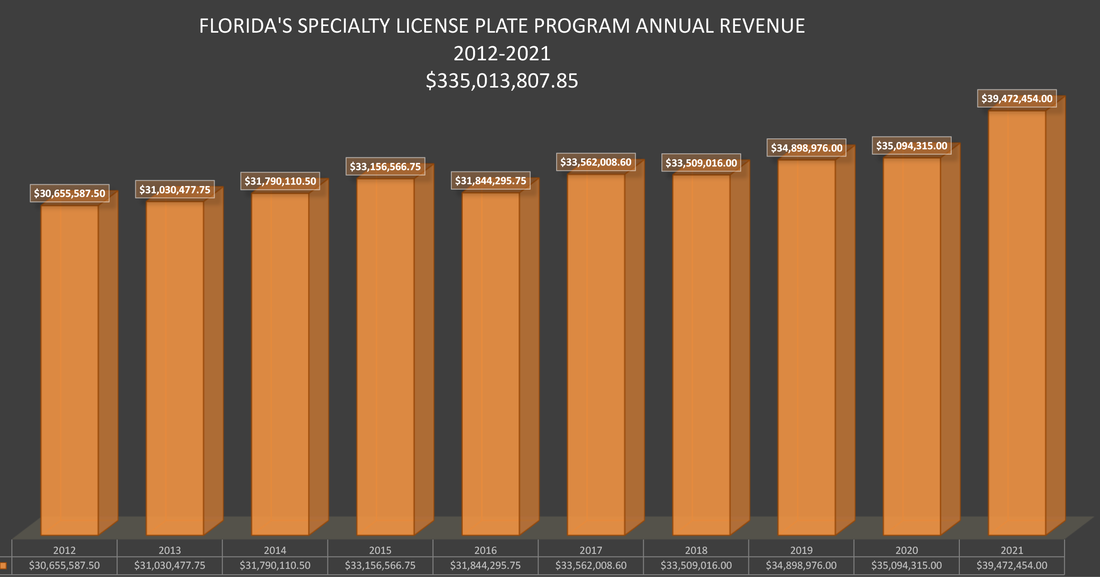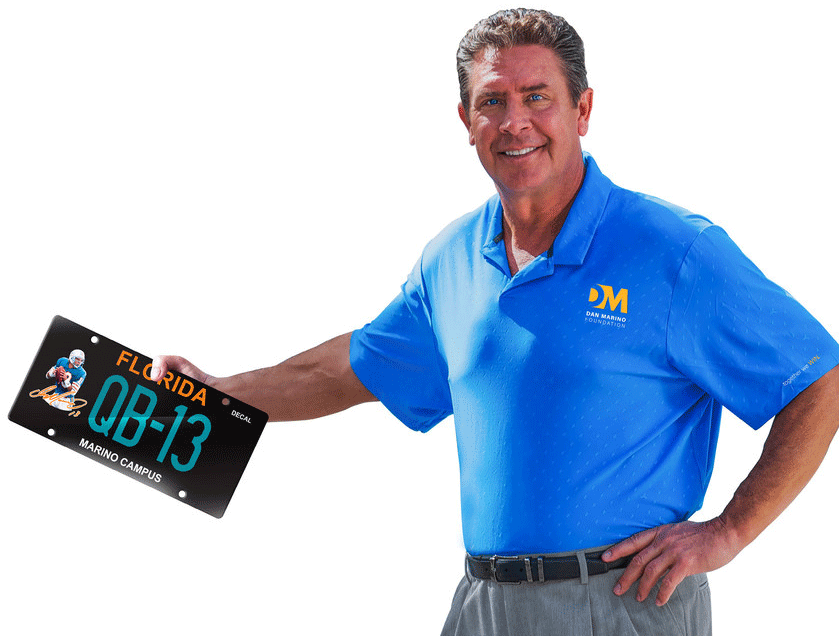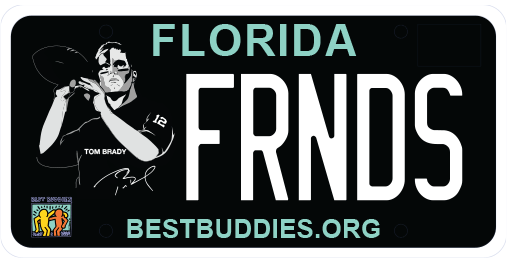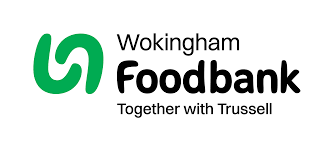 A Berkshire foodbank said it was "worried" about getting enough donations in January. Annette Medhurst, manager at Wokingham Foodbank, said she hoped the donations during the Christmas period would help the decrease in donations in January during the "quieter period". According to the foodbank there has been an increase of more than 90% in referrals since 2019. Ms Medhurst added: "Donations will definitely drop, we hope that the things we have got in during the run-up to Christmas will help see us through." Ms Medhurst said that more people get referred to the foodbank in the New Year. She said: "We get a lot of donations during harvest festival and in the run-up to Christmas, those donations really help see us through the quieter times. "This time of year, we get a lot of donations from schools and businesses but donations will drop definitely in January. "We couldn't do what we do without the donations from our community." Peter Woodman, from Bracknell Foodbank, said it was "very busy during the festive period". "We see people coming in, you can see how distressed they are and you just welcome them," he said. "You explain things to them and you have professional people who help you there." Lucy Martin, operations manager at Wokingham Foodbank, explained that volunteers had been helping to sort through the donations and "putting them into different sections in the warehouse" to prepare for quieter times.
She said: "Sorting donations involves putting them into different sections and areas so they know how many trays of pasta they've got, or rice, and we also have to date them. "We never have food that's gone out of date, we rotate the stock and know what needs to be used next." She said they were hopeful there was enough food but donations were "always needed".
0 Comments
The Dubai government has chosen a guerrilla marketing strategy to communicate awareness around the threat posed by world hunger to domestic audiences. The media and marketing arm of the Emirate of Dubai has teamed up with Publicis Groupe and Saatchi & Saatchi UAE to unleash a fleet of vehicles bearing empty license plates across the city to communicate the plight of an estimated 800 million people who suffer from hunger.  Coinciding with fasting during the month of Ramadan, the unheralded move provoked consternation among the public as they attempted to solve the mystery of whether they were seeing intelligence services at work or stolen vehicles. The stunt was raising awareness of literal empty plates, which cause millions to go hungry – an issue that has sparked the 1bn meals initiative by Mohammed bin Rashid Al Maktoum to ensure no one in the Middle East, Africa and South Asia need go hungry. To further this cause affluent Emiratis will be invited to bid for unique number plates, with the proceeds raised paying for meals to be given to the neediest including refugees, displaced people and anyone affected by a humanitarian or natural disaster. According to the latest statistics released by the Florida Department of Highway Safety and Motor Vehicles, 1,816,588 specialty license plates were sold in 2021 and a total of $39,472,454.00 was raised, the highest amount in the history of the program.
Prior to 2009, specialty license plate sales increased every year, despite the economic recession. On October 1, 2009, the Florida State Legislature significantly increased vehicle registration fees, particularly with respect to purchasing specialty license plates. In 2009, annual sales of Florida Specialty License Plates amounted to 1,623,486. After 2009, there was a 19.78% decline in Specialty Plate sales, reflecting approximately $7 million lost in annual revenue. In September, 2013, the Florida Legislature reduced some fees associated with vehicle registrations, however, did not address the significant increase in the cost to purchase a new specialty license plate that was imposed in 2009. Despite the increase in fees, specialty plates have now surpassed thospre-2009 numbers, although the number of Florida residents - and Florida registered vehicles - has also significantly increased.  James Bond had a license to kill, but apparently he also wanted his very own license plate. Pierce Brosnan is well-known for his portrayal of James Bond in four films between 1995 and 2002, but most fans are less aware that he once designed a license plate for the state of California. In 2010, Brosnan and his wife Keely were among several people who co-founded the California Spay and Neuter License Plate Fund, with the goal of raising money to sponsor low- or no-cost procedures for pets from low-income families. A few years later, the fund worked with the California Department of Motor Vehicles to offer motorists the opportunity to purchase a special “Pet Lovers” license plate, with funds going toward the cause. While the majority of the plate’s color scheme is based on the standard California design, it also features the image of a purple dog and a cat in sunglasses — which is original artwork by Pierce Brosnan, depicting his adopted dog Shilo and his adopted cat Angel Baby. The fees collected from ordering the Pet Lover’s license plate are still awarded annually to facilities all over California. The money is first sent to the California Department of Food and Agriculture, to be then awarded on a grant basis to animal control units or nonprofit shelters that offer spay and neutering services. In 2021, for instance, the program awarded $330,000 across eight projects to help stop pet overpopulation. This year, there is up to $488,000 available in funding. The pet lover’s license plate can still be requested at California DMV locations and ordered online
Two new Florida specialty license plates are now in a race to complete their Presale Voucher phase, where they have to get 3,000 before the plate will be made - both featuring quarterbacks. The Dan Marino license plate will benefit the Dan Marino Campus, Tom Brady's image is being used to benefit Best Buddies International. Both organizations have chosen a black background, which is trending throughout the United states. So who will be the first to complete their presale? And which plate will sell more? The Florida Legislature prioritized their list of new plates when approving them this year, and the DMV must cycle through them for approval in that order. Marino starts at #11 in the order of plates to be approved, Brady/Best Buddies is at #21. With Tom Brady still playing, and Dan Marino retired, a comparison of the two quarterbacks can still be made. Both were measured at 6' 4" and nearly 225 lbs, Marino was drafted in the 1st round (27th overall) in 1983 and Brady was drafted in the 6th round (199th overall) in 2000. Brady has appeared in 9 Super Bowls, Marino in 1. Brady has been voted NFL MVP 3 times, Marino 1.
Other interesting comparisons: NFL Passing touchdown leader: Brady 2 - Marino 3. NFL Passing Yards Leader: Brady 2 - Marino 5. Touchdown Passes: Brady 50 (2007) - Marino 48 (1984) Passing Yards: Brady 5235 (2011) - Marino 5084 (1984) Interceptions Thrown: Brady 0 (2008) - Marino 3 (1983) Stay tuned! 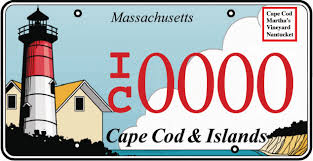 The Cape Cod Commission, on behalf of the Barnstable County Board of Regional Commissioners and the Barnstable County Economic Development Council (BCEDC), has awarded more than $136,000 in grant funds through the Barnstable County License Plate Grant Program to support COVID-19 Recovery and Resiliency projects. The Barnstable County Board of Regional Commissioners voted unanimously to award the following six grants: $25,0000 to Sustainable Cape: Center for Agricultural Preservation and Education to expand access to locally grown and produced foods $25,000 to Love Live Local for the Cape Cod Resilience Fund to provide economic relief to Cape Cod’s small business community $24,802 to Cape Cod Community College to develop the curriculum for the Massachusetts Community Health Worker program $25,000 to the Arts Foundation of Cape Cod to support Cape Cod arts and cultural organizations as they work to recover and reopen $11,545 to Cape Cod Young Professionals to support workforce retention and development through CCYP’s new Laser-Focused Coaching Program $25,000 to the Lower Cape Community Development Corporation to provide comprehensive business support to Lower-Cape based small businesses The Barnstable County License Plate Grant Program, funded by proceeds from the sale of Cape Cod and Islands specialty license plates, is intended to support regional priorities for economic development and achievement of long-term economic diversity and sustainability. The funding was made available to local or regional governmental or nonprofit agencies for projects that support recovery efforts from the COVID-19 pandemic and resiliency to such impacts in the future. Projects proposed were required to address a documented impact of the pandemic and align with and support implementation of the region’s Comprehensive Economic Development Strategy (CEDS). Eighteen proposals were submitted in response to a Request for Proposals issued in June. The BCEDC recommended six proposals for funding, which were approved by the Barnstable County Board of Regional Commissioners. Proposition 15: Increases Funding for Public Schools, Community Colleges, and Local Government Services by Changing Tax Assessment of Commercial and Industrial Property. Initiative Constitutional Amendment. Yes/No Statement A YES vote on this measure means: Property taxes on most commercial properties worth more than $3 million would go up in order to provide new funding to local governments and schools. A NO vote on this measure means: Property taxes on commercial properties would stay the same. Local governments and schools would not get new funding.  Dr. Priscilla Chan and Mark Zuckerberg Dr. Priscilla Chan and Mark Zuckerberg The Legislative analysis states that increased property taxes on commercial properties worth more than $3 million will provide $6.5 billion to $11.5 billion in new funding to local governments and schools. 60% would go to cities, counties, and special districts. Each city, county, or special district’s share of the money depends on several things including the amount of new taxes paid by commercial properties in that community. Not all governments would be guaranteed new money. Some in rural areas may end up losing money because of lower taxes on business equipment. The other 40% would increase funding for schools and community colleges. Each school or community college’s share of the money is mostly based on how many students they have. ‘Property’ Includes Land, Buildings, Machinery, and Equipment. The measure requires commercial and industrial (after this referred to simply as “commercial”) land and buildings to be taxed based on how much they could be sold for instead of their original purchase price. This change is put in place over time starting in 2022. The change does not start before 2025 for properties used by California businesses that meet certain rules and have 50 or fewer employees. Housing and agricultural land continues to be taxed based on its original purchase price. The measure reduces the taxable value of each business’s equipment by $500,000 starting in 2024. Businesses with less than $500,000 of equipment pay no taxes on those items. All property taxes on business equipment are eliminated for California businesses that meet certain rules and have 50 or fewer employees. The Chan Zuckerberg Initiative (CZI) was founded by Dr. Priscilla Chan and Mark Zuckerberg in 2015, and according to the website, is a new kind of philanthropy that’s leveraging technology to help solve some of the world’s toughest challenges — from eradicating disease, to improving education, to reforming the criminal justice system. To date, CZI has granted $1.805 million to the campaign and is contributing an additional $4.5 million, bringing total support for the measure to just over $6.3 million. CZI is also granting $1 million to the No on Proposition 20 campaign to oppose a measure that would incarcerate more people for low-level crimes and increase already bloated prison budgets. “For generations, there has been profound inequity in the way we resource local services — with disinvestment over time and an increasingly limited ability for local communities to address their most pressing needs,” said Michael Troncoso, Head of Justice & Opportunity at CZI. “Even before COVID-19, Black and Brown communities have lacked the resources needed to sustain adequate local health care systems, protect essential workers, and support our schools. This systematic disinvestment was built into the law, and we now have the historic opportunity, through Proposition 15, to correct it and get our communities the support they need.” Campaign Finance Reports from the Secretary of State show the payments made by CZI.
 Lynsi Snyder, pictured with fourth husband Sean Ellingson earlier this year. Photo / Getty Images Lynsi Snyder, pictured with fourth husband Sean Ellingson earlier this year. Photo / Getty Images Notoriously private billionaire CEO Lynsi Snyder appeared on the 2019 Wealthiest Angelenos List, published by the Los Angeles Business Journal, at number 27, with a net worth of $2.9 billion, well above Shawn ‘Jay-Z’ Carter and Beyonce Knowles-Carter who were tied with Aubrey Chernick at number 49 with $1.5 billion. Aubrey Chernick grew up in Deloraine, a small town of 900 people in the Canadian province of Manitoba where his father owned a small store (“Thrifty Stores”). Chernick started his own software company to build software that would manage a new IBM Operating System. He called his company Candle Corporation. IBM itself became a customer of Candle when IBM had difficulty in understanding how their own computers worked. In 2015, Chernick launched NextGen Crowdfunding, as the go-to place on the Web where they can educate themselves on the latest application of these critical fund-raising programs.  Evan Spiegel and Miranda Kerr Evan Spiegel and Miranda Kerr Elon Musk topped the list at a net worth of $22.6 billion. Evan Spiegel, co-founder and CEO of the American social media company Snap Inc., (Snapchat) which he created with Bobby Murphy and Reggie Brown while they were students at Stanford University, is now ranked at 19, with a net worth of $3.7 billion. Spiegel was named the youngest billionaire in the world in 2015. He is now 30 and married to Miranda Kerr, a former Victoria’s Secret Angel Lynsi Snyder spoke about her troubled life and her unexpected side job during a very rare media interview. The 37-year-old is the heiress to the In-N-Out burger chain fortune, with a net worth of around $3.6 billion in 2020, according to Forbes. The beloved US fast food chain was founded by her grandparents Harry and Esther Snyder in California in 1948. Due to a series of family tragedies, Ms Snyder became the family's last remaining heir in 2000 when she was just 18, after the deaths of her father and uncle. Her father Guy Snyder died of an overdose in 1999, when she was just 17. Her uncle Richard Snyder had died in 1993 in a plane crash along with In-N-Out executive vice president Philip R West. She said her parents had divorced when she was 12, after the drugs and "another woman" impacted on the marriage. She began gradually receiving stakes in the business as part of a complicated trust plan made by her grandparents, and in 2017 she received the last slice of her fortune, on her 35th birthday.
She took over as president of the company in 2010, but despite being one of America's richest — and youngest — people, Ms Snyder had long shunned the spotlight in favor of a more reclusive life. The mother of four — who has been married four times — told The Christian Post she previously battled drug and alcohol abuse before turning her life around due to her faith. She also spoke about her side job as a Christian minister, after founding the Army of Love ministry during a particularly "painful" period of her life. "That's when I really started longing for that attention and that love, because my dad was the greatest source of that," she said. "I was calling out to God as my third marriage was failing. I was in a place where I felt I couldn't do ministry because my own heart and home were a mess," she told the Christian Post. "My (ex) husband and I were in constant turmoil. I became desperate for the hope that I could be used by God despite my circumstances." She ended up studying discipleship online and filed for a non-profit tax-exemption. As she waited for it to be approved, she ended up meeting her current husband Sean Ellingson, and the filing was approved shortly after the pair tied the knot. Ms Snyder said she was also a believer in "servant leadership" — a leadership philosophy where the leader's main goal is to serve others rather than grow the business. She said she worked hard as In-N-Out CEO to "maintain" the business without "compromising the quality of product, service, or standards." "My grandparents set the bar high and I only try to raise it," she said.  Sixty feet beneath the surface of the Caribbean Sea, aquanaut Fabien Cousteau and industrial designer Yves Béhar are envisioning the world's largest underwater research station and habitat. The pair have unveiled Fabien Cousteau's Proteus, a 4,000-square-foot modular lab that will sit under the water off the coast of Curaçao, providing a home to scientists and researchers from across the world studying the ocean -- from the effects of climate change and new marine life to medicinal breakthroughs. Designed as a two-story circular structure grounded to the ocean floor on stilts, Proteus' protruding pods contain laboratories, personal quarters, medical bays and a moon pool where divers can access the ocean floor. Powered by wind and solar energy, and ocean thermal energy conversion, the structure will also feature the first underwater greenhouse for growing food, as well as a video production facility. The Proteus is intended to be the underwater version of the International Space Station (ISS), where government agencies, scientists, and the private sector can collaborate in the spirit of collective knowledge, irrespective of borders. 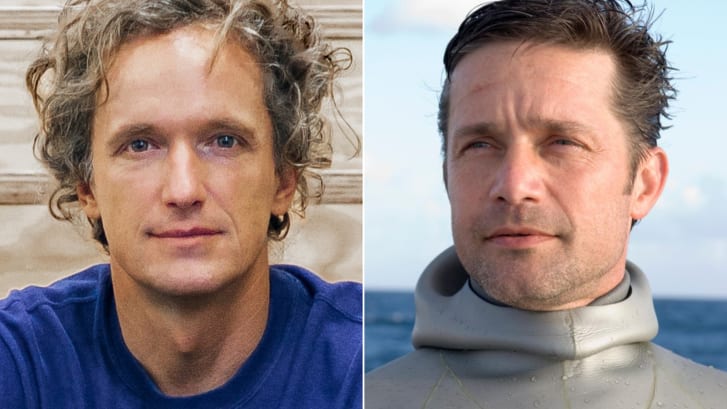 Industrial designer Yves Béhar (left) and Aquanaut Fabien Cousteau (right) Industrial designer Yves Béhar (left) and Aquanaut Fabien Cousteau (right) "Ocean exploration is 1,000 times more important than space exploration for -- selfishly -- our survival, for our trajectory into the future," Cousteau said over a video call, with Béhar. "It's our life support system. It is the very reason why we exist in the first place." The newly unveiled design is the latest step for this ambitious project. According to Cousteau, it will take three years until Proteus is installed, though the coronavirus pandemic has already delayed the project. Cousteau comes from a family of famous oceanographic explorers. He's the son of filmmaker Jean-Michel Cousteau and grandson of Aqua-Lung co-creator Jacques-Yves Cousteau. The project is a joint effort between the Fabien Cousteau Ocean Learning Center (FCOLC) and Béhar's design firm Fuseproject, as well as their partners, which include Northeastern University, Rutgers University and the Caribbean Research and Management of Biodiversity Foundation. While the project currently has some backing from the private sector, it is currently seeking further funding. Beyond backers, the station's wet and dry labs can be leased to government agencies, corporations and academic institutions. Part of the plan is to offer regular visibility about what is happening on Proteus, including live streams and VR/AR content. In this way Cousteau hopes to engage a wider audience. “Imagine if you found something amazing -- whether it be microcosmic like a pharmaceutical, or macrocosmic like the next greatest animal -- if you could show it to classrooms and universities," he said. "Our mission is to be able to translate complex science into something that the average person not only maybe will understand, but fall in love with." 22,000 nonprofits will close their doors for good in the next 3 years? Michael Towner, Iconic Legacy7/23/2020 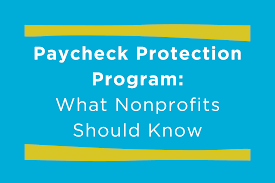 It is projected that 22,000 nonprofits will close their doors for good in the next 3 years as a result of the economic crisis. That's the median of several scenarios projected by Candid; it assumes the economic downturn will last 24 months. The 22,000 figure represents a failure rate of 7% among the 315,698 U.S.-based nonprofits whose financial data Candid examined in a new study. Dan Parks reports the new paper presents a less dire forecast than many experts have predicted. "The majority of nonprofit organizations are positioned to weather this storm," the report states. Some charities are hailing the Paycheck Protection Program as a financial saviour, but others say it provided only a brief respite from layoffs and other cost-cutting measures. According to new estimates from the Dorothy A. Johnson Center for Philanthropy at Michigan’s Grand Valley State University, the program saved 4.1 million nonprofit jobs, about a third of all nonprofit jobs in the nation. The study estimated that about 40 percent of eligible nonprofits received a loan and that nearly two-thirds of eligible nonprofit jobs were protected by PPP funds. The study noted that many smaller nonprofits in particular may have missed out by either not applying for loans or not successfully filling out applications. Which kinds of groups have gotten the money so far? Religious organizations, followed by elementary and secondary schools, and civic, social, or social-advocacy organizations, were the most common recipients of PPP loans, According to the data, 42,462 nonprofit organizations received loans of between $150,000 and $10 million. The goal of the Paycheck Protection Program is to encourage employers to keep their workers on the payroll during the coronavirus pandemic. If employers maintain their work force, the loans are mostly forgivable. Of those 42,462 nonprofits, 9,238, or 21.8 percent, were religious organizations; 5,647, or 13.3 percent, were elementary and secondary schools; and 6.3 percent were civic, social, or social-advocacy organizations. 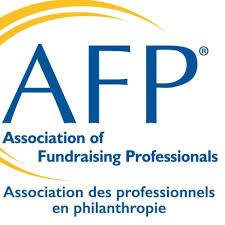 In a survey conducted by the Association of Fundraising Professionals members conducted in May, 2% of respondents said they had been laid off. 20% said their organizations had laid off staff, 23% percent said they had instituted furloughs, and 18% had cut staff pay. Groups that have long relied on in-person fundraising events or revenue from ticket sales are making tough decisions about which fundraising roles are indispensable. Organizations have not eliminated fundraising positions at the same pace that they have laid off people in other departments, says Mike Geiger, President of the Association of Fundraising Professionals. "So far, our numbers are really low in terms of fundraisers being laid off," he says. "I think that is because organizations understand the importance of keeping revenue-generating positions. Fundraisers are the bridge between the donor and the cause. If you break that bridge, if you destroy that bridge, you lose that connection. I think that a lot of CEOs get that, and they might get it now more than they ever did." But even for CEOs and other leaders who understand and value their fundraisers, making staffing decisions when revenue is drying up is a tough balancing act. What is clear is that some organizations and fundraising teams have been harder hit than others. The American Cancer Society has long relied on large in-person fundraising events. And Covid-19 has hit that model especially hard. As events had to be postponed and ultimately canceled or shifted online, the Cancer Society quickly realized it would have to cut costs. The organization did not go to personnel right away, says Mike Neal, the senior executive vice president for field operations. First, it looked to reduce expenses for things like meetings and travel, and postponing events like the Relay for Life walks resulted in some cost savings. But in June, the charity laid off around 1,000 staff members. About 200 were fundraisers, Neal says. The group expects to bring in around $200 million less in 2020 than it had forecast before the coronavirus struck. Smaller groups are also making these tough choices. Cherian Koshy is director of development at Des Moines Performing Arts, an organization that presents visiting plays and other performances — all of which have been canceled or postponed indefinitely. Despite "exceptional" fundraising in recent months, there is no getting around the fact that the organization's business model is partially driven by the money it earns from ticket sales. "Even with a lot of fundraising that has happened over the course of these last few months and the generosity of our donors, it's not enough to keep our entire staff at that total 100 percent, especially when we don't have a date to reopen," he says. So far, Koshy has not had to lay anyone off, but he has had to cut hours. As of July 1, his development team of five people is working the equivalent of 3.5 full-time jobs. "When we talk about lifeboat ethics, there's no good decision about who needs to be tossed off the boat and who gets to stay on," he says. "Everybody's roles are essential in some nature; otherwise, they wouldn't be on the boat in the first place." At some organizations, veteran development directors and senior leaders are getting virtual pink slips, too — delivered via Zoom or over the phone. Barbara Perlov was laid off from her position as director of foundation and government relations at the Boys' Club of New York at the end of March.
The organization has historically relied on wealthy individuals and events, but Perlov was leading the charge to increase support from institutional donors. And even through the pandemic, she saw great potential. She had been working to build relationships with grant makers. Getting the news of her layoff "was shocking," she says. "No doubt about it." "Just getting my head wrapped around the fact that my job was ending was pretty emotional," she says, "not to mention, the personal things going on in my life that I needed to address: what I was going to do about health care, about applying for unemployment." Fundraisers — those who are recently unemployed and those who are plugging away from their home offices — are facing compounding stressors right now. Several fundraisers have lined up part-time consulting work to pay the bills and support organizations in their efforts to raise money through the crisis. |
BLOGArchives
January 2025
Categories
All
|



